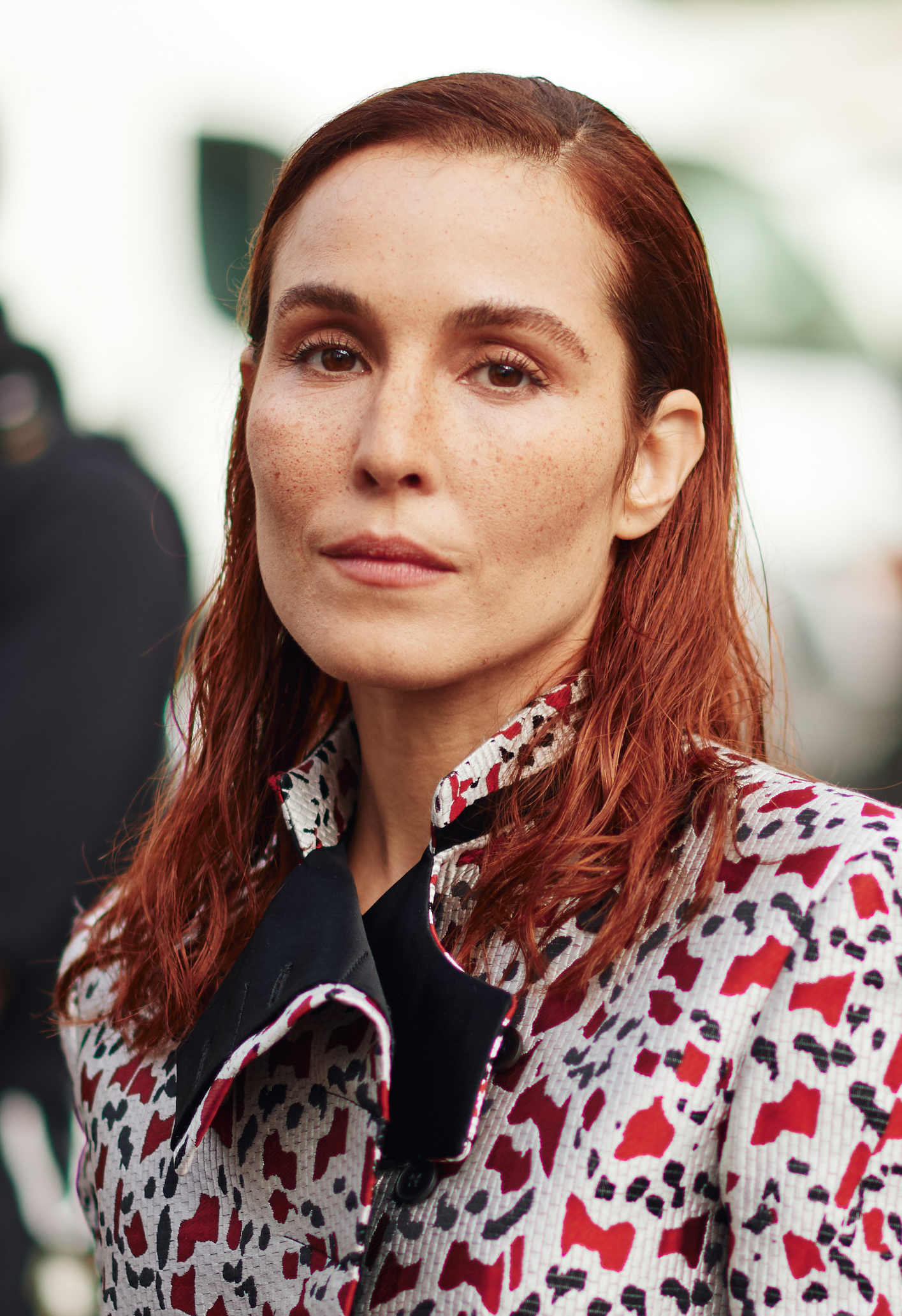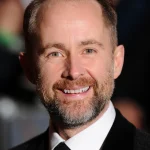Noomi Rapace: Physical Transformation and Emotional Intensity in Global Cinema
Noomi Rapace has established herself as one of the most physically committed and emotionally fearless actresses of her generation, building an international career defined by transformative performances and a willingness to explore extreme psychological states. At 44, the Swedish-born performer has created a body of work spanning European art house cinema and Hollywood blockbusters, consistently bringing intellectual depth and visceral intensity to characters facing extraordinary circumstances. Through her breakthrough portrayal of Lisbeth Salander and subsequent diverse roles across multiple film industries, Rapace has emerged as a singular talent whose performances are characterized by remarkable physical specificity and unsentimental emotional truth.
Nomadic Childhood Between Cultures
Born in Hudiksvall, Sweden in 1979, Rapace’s early life was marked by movement and cultural adaptation that would later inform her chameleon-like ability to inhabit diverse characters. When she was five years old, her mother remarried an Icelandic man, leading the family to relocate to Iceland—a transition that required young Noomi to adapt to a new language, culture, and family dynamic simultaneously.
“Moving between cultures as a child gives you this heightened awareness of how identity is constructed,” Rapace explained in an interview with The Guardian. “You learn very early that language, body language, social expectations—all these elements that seem ‘natural’ to people who grow up in one place—are actually highly specific and can be learned, unlearned, or transformed. That understanding has been invaluable as an actress, this visceral knowledge that identity is fluid rather than fixed.”
This early experience with cultural adaptation was further complicated by Rapace’s complex relationship with her biological father, Spanish flamenco singer Rogelio Durán, whom she only met occasionally throughout her childhood. These diverse cultural influences—Swedish, Icelandic, and Spanish—created an unusual foundation for a performer whose career would later be defined by her ability to move between different national film industries and performance traditions.
The nomadic quality of Rapace’s childhood continued through her adolescence, culminating in her decision to leave home at just 15 years old to pursue acting in Stockholm—an extraordinary act of independence and determination for someone so young. This early separation from family structures reinforced Rapace’s self-reliance and willingness to take significant risks in pursuit of artistic goals—qualities that would later define her approach to challenging roles.
“Leaving home that young forces you to develop incredible self-sufficiency,” Rapace told Interview Magazine. “There’s no safety net, no one to catch you if you fail. That creates both tremendous freedom and tremendous responsibility. You learn to trust your instincts absolutely because sometimes that’s all you have. I think that early independence has made me much less afraid of taking risks in my work—once you’ve survived on your own as a teenager, the idea of failing at a performance seems much less terrifying.”
This fearlessness would become one of Rapace’s most distinctive qualities as a performer, allowing her to approach physically and emotionally demanding roles with uncommon commitment and absence of vanity.
Early Career Development
Following her move to Stockholm, Rapace began formal acting training while securing small roles in Swedish television productions. Her first significant screen appearance came in the 1996 film Svarta pärlor (Black Pearls) when she was 16, though these early roles offered limited opportunity to demonstrate the intensity that would later become her trademark.
Her experience during this period was typical of many young actresses—modest roles that rarely challenged her capabilities, often focused more on appearance than character complexity. Unlike many performers who might have been content with this level of success, Rapace maintained a critical perspective on her early work, consciously seeking opportunities that would allow her to develop greater technical and emotional range.
“Those early years were important for learning the technical aspects of screen acting,” Rapace explained to Swedish film magazine Filmrutan. “But I was always hungry for more complexity, more darkness, more truth. I would watch performances by actresses like Liv Ullmann or Gena Rowlands and think, ‘That’s the kind of fearlessness I want to bring to my work.’ But those kinds of roles rarely come to young actresses unless you actively fight for them.”
This determination to pursue challenging material led Rapace to theater work alongside her screen appearances, participating in productions at Stockholm’s respected Orionteatern that allowed her to develop greater emotional range and physical expressiveness than her early screen roles permitted. Colleagues from this period recall her unusual intensity and committed approach to even modest roles—qualities that suggested capabilities far beyond what she had been able to demonstrate on screen.
Rapace’s personal life also evolved during this period when she married Swedish actor Ola Norell in 2001, with whom she had a son, Lev. The couple adopted the surname Rapace, meaning “bird of prey” in French and Italian—a name that would later seem prophetic given Noomi’s fierce, predatory quality in many of her most memorable roles. Though the marriage ended in 2011, the professional partnership continued through several projects, including their collaboration in the Millennium trilogy that would transform Rapace’s career.
Transformation into Lisbeth Salander
Rapace’s career changed irrevocably when she was cast as Lisbeth Salander in the Swedish film adaptations of Stieg Larsson’s Millennium trilogy, beginning with Män som hatar kvinnor (released internationally as The Girl with the Dragon Tattoo) in 2009. The role of Salander—a brilliant but traumatized computer hacker with a complex moral code and a history of surviving extreme abuse—required a performer capable of conveying both formidable intelligence and profound emotional damage without resorting to conventional victimhood tropes.
Rapace’s preparation for the role demonstrated the physical commitment that would become her professional signature. She underwent a complete physical transformation, losing weight to achieve Salander’s wiry physique, cutting and dyeing her hair, getting multiple real piercings, and training extensively in kickboxing and motorcycle riding to perform her own stunts. This external transformation was matched by intensive research into the psychology of trauma survivors and individuals with social difficulties, creating a holistic approach to the character that extended far beyond mere appearance.
“With Lisbeth, the physical transformation wasn’t about vanity or appearing different for its own sake,” Rapace explained to Empire Magazine. “It was about finding her truth through her physical reality. Someone who has experienced the kind of trauma Lisbeth has survived lives in their body differently—there’s a constant tension, a readiness for threat, a relationship with pain that’s completely different from someone who hasn’t experienced that kind of violation. I needed to understand that physical reality from the inside, not just intellectually.”
The resulting performance was nothing short of revolutionary—a portrait of a trauma survivor unlike anything previously seen in mainstream cinema. Rapace’s Lisbeth was simultaneously vulnerable and dangerous, wounded and powerful, with a complex morality that refused easy categorization as either victim or avenger. Critics and audiences responded powerfully to this portrayal, recognizing that Rapace had created something genuinely original within the often-limited parameters of female characters in thriller films.
“What made Noomi’s Lisbeth so groundbreaking was her refusal to make the character palatable or conventionally sympathetic,” observed film critic David Thomson. “She preserved Lisbeth’s fundamental unknowability—her strangeness, her anger, her capacity for both enduring and inflicting violence—without ever reducing her to either a helpless victim or a simplistic revenge fantasy. It was a performance of extraordinary moral complexity that expanded our understanding of what female characters could be in contemporary cinema.”
The trilogy—The Girl with the Dragon Tattoo, The Girl Who Played with Fire, and The Girl Who Kicked the Hornet’s Nest—were released in quick succession between 2009 and 2010, creating an unusually concentrated period of international exposure that catapulted Rapace from Swedish recognition to global prominence. The films’ success, particularly in markets like the United Kingdom and the United States where subtitled films rarely achieve mainstream popularity, demonstrated both the universal appeal of Larsson’s story and the undeniable power of Rapace’s central performance.
Hollywood Transition
Following the international success of the Millennium trilogy, Rapace faced the transition that challenges many European actors who achieve global recognition—negotiating entry into the Hollywood system while maintaining the artistic integrity that defined their earlier work. Unlike performers who attempt this transition through supporting roles in commercial productions, Rapace immediately sought leading parts in projects with substantial artistic ambition.
Her English-language debut came with a starring role opposite Robert Downey Jr. in Guy Ritchie’s Sherlock Holmes: A Game of Shadows (2011), where she portrayed the gypsy fortune-teller Simza Heron. Though operating within the constraints of a commercial franchise film, Rapace brought unexpected depth to what could have been a standard action role, particularly through the physical specificity that had distinguished her portrayal of Lisbeth Salander.
This was quickly followed by her leading role in Ridley Scott’s Prometheus (2012), a science fiction film set in the Alien universe, where she portrayed scientist Elizabeth Shaw. The role demonstrated Rapace’s ability to carry a major Hollywood production while still bringing the emotional intensity and physical commitment of her European work. Her performance in the film’s self-surgery scene—where Shaw operates on herself to remove an alien embryo—became particularly notable for its visceral intensity and Rapace’s willingness to portray extreme physical distress without vanity or restraint.
“The surgery scene in Prometheus is a perfect example of what makes Noomi such a valuable performer,” Scott commented during the film’s promotion. “Many actresses would have approached it primarily as a technical challenge or focused on how they appeared even in such an extreme situation. Noomi went straight to the raw truth of the experience—the terror, the determination, the animal will to survive. That’s incredibly rare, especially in the context of a large studio film where there’s often pressure to modulate intensity to maintain audience comfort.”
This commitment to emotional and physical authenticity regardless of production context would become Rapace’s defining characteristic as she moved between Hollywood projects and more modestly budgeted European films. Unlike actors who adopt different performance approaches depending on a project’s commercial positioning, Rapace maintained consistent artistic standards across diverse production scales and national contexts.
Diverse Projects and Continued Evolution
Following her initial Hollywood success, Rapace demonstrated remarkable versatility through projects spanning multiple genres, production scales, and national film industries. Rather than pursuing a linear career progression toward increasingly prominent Hollywood roles, she adopted a more eclectic approach, selecting projects based on artistic interest rather than strategic career building.
This period included lead roles in smaller-scale films like the Norwegian thriller The Monitor (2011) and the British crime drama Dead Man Down (2013), alongside major studio productions like the science fiction film Bright (2017). Throughout these diverse projects, critics consistently noted Rapace’s unusual combination of fierce physical presence and psychological nuance—qualities that made her particularly effective in roles requiring both action capabilities and emotional depth.
Perhaps most indicative of Rapace’s artistic ambition was her seven-role tour de force in What Happened to Monday (2017), where she portrayed septuplet sisters in a dystopian future where siblings are outlawed. The role required not only the technical challenge of performing opposite herself in multiple iterations but also the artistic challenge of creating seven distinct personalities who share identical genetics but have developed different adaptations to their restricted circumstances.
“The septuplets project was this fascinating experiment in nature versus nurture through performance,” Rapace told Variety. “How do you create seven characters who are genetically identical but have developed completely different personalities based on their experiences and adaptations? It required developing very specific physical vocabularies, vocal patterns, and emotional responses for each sister while maintaining the biological connection between them. That kind of challenge—where technical precision and emotional truth have to work together perfectly—is what I find most exciting as a performer.”
This interest in characters undergoing extreme circumstances or existing at social margins continued with films like the psychological thriller Rupture (2016) and the dystopian drama Close (2019), where Rapace portrayed a female bodyguard protecting a wealthy heiress. In the latter, Rapace’s extensive physical training and willingness to perform her own stunts allowed for action sequences with unusual authenticity—a quality increasingly rare in an era of digital effects and stunt doubles.
“What’s remarkable about Noomi in action sequences is that you’re never watching a technical exercise or a display of skill for its own sake,” observed a stunt coordinator who worked with her on multiple projects. “The physical capabilities are always in service of character—there’s a psychological reality driving every movement. That integration of technical skill and emotional truth makes her action work uniquely compelling and distinguishes her from performers who approach physical scenes as separate from character development.”
Performance Philosophy and Technical Approach
Colleagues who have worked with Rapace consistently mention her unusual combination of meticulous preparation and emotional availability. Unlike actors who rely primarily on technical skill or instinctive emotional access, Rapace integrates these approaches—bringing exhaustive research and physical preparation to roles while maintaining the capacity for in-the-moment emotional discovery.
“Noomi’s process combines the most useful elements of both methodical and intuitive approaches,” explained a director who has worked with her on multiple films. “She builds these incredibly detailed foundations for her characters—research, physical training, specific vocal and movement choices—but then remains completely open to discovery within scenes. That combination of rigorous preparation and emotional freedom is incredibly rare and creates performances with both technical precision and authentic spontaneity.”
This approach is particularly evident in Rapace’s physical transformations, which go far beyond surface alterations to involve comprehensive reimagining of how a character inhabits their body. Colleagues note her exceptional body awareness and ability to develop distinct physical vocabularies for different roles—changes in posture, gait, gestural language, and tension patterns that create immediately recognizable characterizations even before dialogue begins.
“What makes Noomi’s physical work so extraordinary is that it’s never externally applied,” observed a movement coach who worked with her. “She doesn’t ‘put on’ physical characteristics like costumes; she discovers how this specific person exists in their body based on their history, psychology, and circumstances. The physical choices emerge organically from character rather than being imposed from outside, which is why they feel so authentic even when depicting extreme states.”
This physical specificity is matched by Rapace’s emotional courage—her willingness to explore psychological extremes without self-protective distancing or concern for how she appears. Directors note her rare capacity to fully inhabit traumatic or violent emotional states without the subtle disassociation many actors maintain when approaching difficult material.
“There’s an absence of vanity in Noomi’s work that’s genuinely unusual,” a cinematographer who has worked with her noted. “Many actors maintain some level of self-awareness about how they look or are perceived even in their most vulnerable scenes—there’s a part of them still managing their presentation. Noomi completely abandons that safety net. When she’s portraying someone in extreme circumstances, she’s fully committed to the truth of that experience without any protective layer between herself and the character’s reality.”
This commitment extends to Rapace’s approach to dialogue and language. Fluent in Swedish, English, Danish, Norwegian, and Italian, she brings particular attention to how language shapes character—both through accent and vocabulary choices and through the physical aspects of speech. Colleagues note her exceptional ear for linguistic nuance and her understanding of how language creates both connection and barrier for characters operating across cultural boundaries.
“Language for Noomi is never just about communication—it’s a fundamental aspect of character,” explained a dialect coach who has worked with her. “She understands intuitively how speaking a second or third language affects not just pronunciation but thought patterns, emotional expression, even physical tension. That awareness brings extraordinary authenticity to her performances as characters navigating multiple cultural contexts.”
Personal Philosophy and Creative Vision
Despite her willingness to discuss her artistic process, Rapace maintains significant privacy regarding her personal life—a boundary that colleagues and journalists describe as clear but not defensive. This selective approach to public exposure reflects both Scandinavian cultural norms around celebrity and Rapace’s conscious decision to maintain space for personal evolution separate from her public persona.
“I’ve never understood the assumption that being an actor means surrendering your privacy,” Rapace told The Independent in a rare comment on the subject. “My job is to portray other lives, not to expose my own for public consumption. Maintaining some personal boundaries actually serves the work—it allows me to observe and process human experience without constantly performing my own identity.”
This perspective extends to Rapace’s approach to social media, where her presence is minimal compared to many contemporary actors. Unlike performers who use digital platforms to cultivate personal brands or maintain visibility between projects, Rapace appears to view acting primarily as a form of deep creative exploration rather than a component of celebrity identity.
Friends and collaborators describe Rapace as intellectually curious and philosophically minded—someone who approaches acting as part of a broader interest in human psychology and social structures rather than as an isolated professional pursuit. This integration of artistic practice with intellectual exploration has allowed her to develop a distinctive perspective on performance that draws from multiple cultural traditions and theoretical frameworks.
“What’s fascinating about conversations with Noomi is how she connects performance to larger questions about identity, power, and human connection,” observed a writer who has developed several projects with her. “She’s not just thinking about character in isolation but about how individual psychology reflects and responds to social systems. That broader perspective gives her work unusual depth—her characters exist within recognizable social realities rather than theatrical vacuums.”
This intellectual foundation informs Rapace’s selective approach to roles, particularly her interest in characters navigating extreme circumstances or existing at social margins. Rather than pursuing conventional leading lady roles that might offer greater commercial visibility, she has consistently selected projects that explore moral complexity, psychological damage, and extraordinary resilience—themes that allow for the intensity and transformation that characterize her most successful work.
Motherhood and Work-Life Integration
While maintaining privacy around her personal life, Rapace has occasionally discussed the impact of motherhood on her creative work. Her son Lev, born in 2003, has been raised primarily by Rapace through her most active professional periods, requiring her to develop approaches to balancing intense creative immersion with parental presence.
“Motherhood fundamentally changes your relationship with vulnerability and strength,” Rapace shared in an interview with Elle. “There’s this profound opening of your emotional capacity—you simply feel everything more intensely—while simultaneously developing this fierce protective instinct and capacity for endurance. That combination has definitely informed my work, particularly in roles where characters are navigating extreme circumstances or fighting to protect something vital.”
Colleagues note Rapace’s distinctive ability to compartmentalize between the intense demands of her roles and her family responsibilities—a capacity that allows her to fully commit to challenging material during working hours while remaining present and engaged as a parent. This skill has become increasingly valuable as her career has required frequent travel between film locations and her home base, creating logistical complexity that demands exceptional organization and emotional resilience.
“What’s remarkable about Noomi is how she can be completely immersed in these incredibly dark, demanding roles during filming and then immediately shift into this warm, attentive maternal presence the moment work ends,” observed a producer who has worked with her on multiple projects. “There’s no spillover of character into her personal interactions, no lingering in difficult emotional states. That psychological agility allows her to take on roles that might otherwise be too consuming to balance with parenthood.”
This capacity for psychological distinction between work and personal life represents a significant achievement for an actress whose performances require such complete emotional commitment. Unlike method actors who remain partially in character throughout production, Rapace has developed techniques for full immersion that nevertheless allow for clean separation when needed—an approach that supports both creative intensity and personal sustainability.
Current Standing and Future Directions
At 44, Noomi Rapace has established herself as an actress of remarkable range and fearless commitment, with a body of work spanning multiple national cinemas and production scales. Unlike performers whose careers follow predictable trajectories of increasing mainstream visibility, Rapace has maintained an eclectic, project-driven approach that prioritizes artistic challenge over commercial calculation.
Industry observers note that this selective approach has created a unique professional position—Rapace is neither exclusively an art house performer nor a conventional Hollywood star, but rather an actress who moves fluidly between these worlds based on creative interest rather than strategic career building. This flexibility allows her access to diverse projects while maintaining the artistic integrity that has distinguished her work from the beginning.
“What makes Noomi uniquely valuable in today’s production landscape is her ability to bring the same emotional authenticity to projects of vastly different scales,” observed a casting director who has worked with her. “She approaches a small European drama with the same commitment she brings to a major studio film. That consistency allows her to move between these worlds without the compromises many actors make when transitioning between indie and mainstream work.”
Looking ahead, industry sources suggest Rapace may be exploring opportunities for greater creative control, potentially moving into production to develop projects specifically aligned with her artistic interests. This evolution would build on her demonstrated fascination with complex female characters existing at societal margins or navigating extreme circumstances—precisely the kind of roles that have showcased her distinctive capabilities but remain underrepresented in conventional production pipelines.
“I’m increasingly drawn to stories that haven’t been told, perspectives that haven’t been centered,” Rapace told Film Comment in a discussion of her creative ambitions. “After years of inhabiting characters created by others, it’s natural to become curious about shaping narratives more directly. There are specific types of female experience that remain largely unexplored in cinema—particularly women’s relationship with violence, power, and moral ambiguity. Those are territories I’m interested in exploring more fully, whether as an actress or in expanded creative roles.”
This interest in expanded creative involvement aligns with broader industry shifts toward actor-initiated development, where performers with distinctive artistic perspectives increasingly participate in project creation rather than simply joining pre-existing productions. Rapace’s demonstrated commitment to complex characterization and physical transformation positions her ideally for this more holistic creative approach.
Regardless of these potential expansions, Rapace seems likely to maintain her commitment to transformative, physically demanding performances across diverse projects and production contexts. Her unique combination of intellectual depth, physical commitment, and emotional fearlessness positions her for continued relevance in an evolving industry increasingly interested in complex female characters and authentic physical performance.
In a film landscape often defined by compromise and calculation, Noomi Rapace has built a career characterized by artistic courage and unapologetic intensity. From her breakthrough as Lisbeth Salander to her diverse subsequent work across multiple film traditions, she has consistently prioritized emotional truth and transformative commitment over conventional star-making concerns. This unwavering artistic integrity, combined with her extraordinary technical capabilities and physical specificity, has established her as one of the most compelling and authentic screen presences of her generation—an actress whose work expands our understanding of what female performers can embody and express in contemporary cinema.








